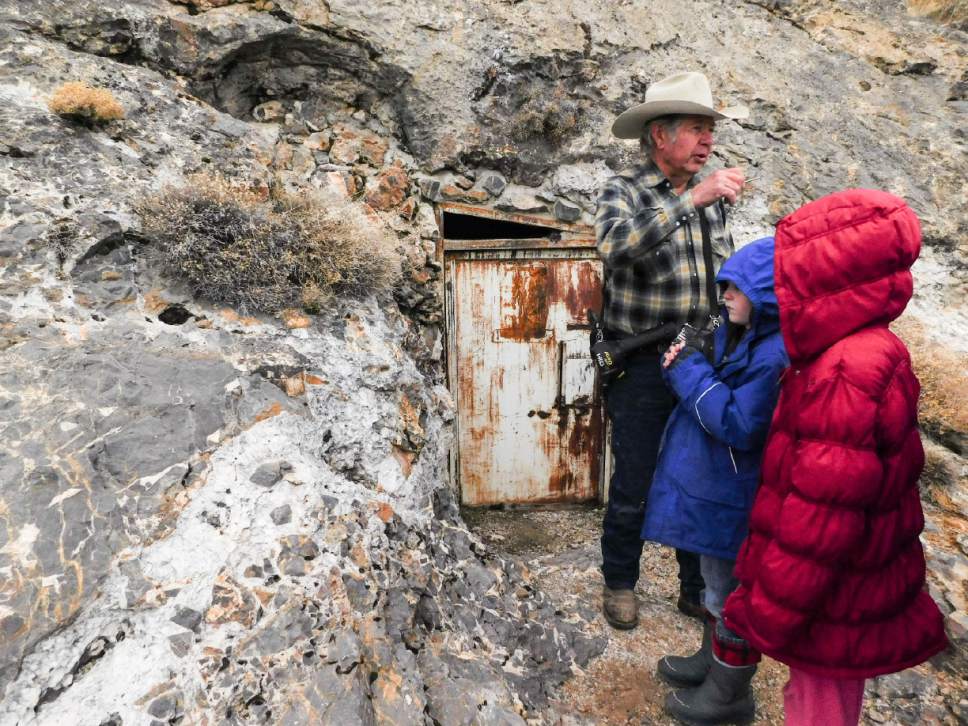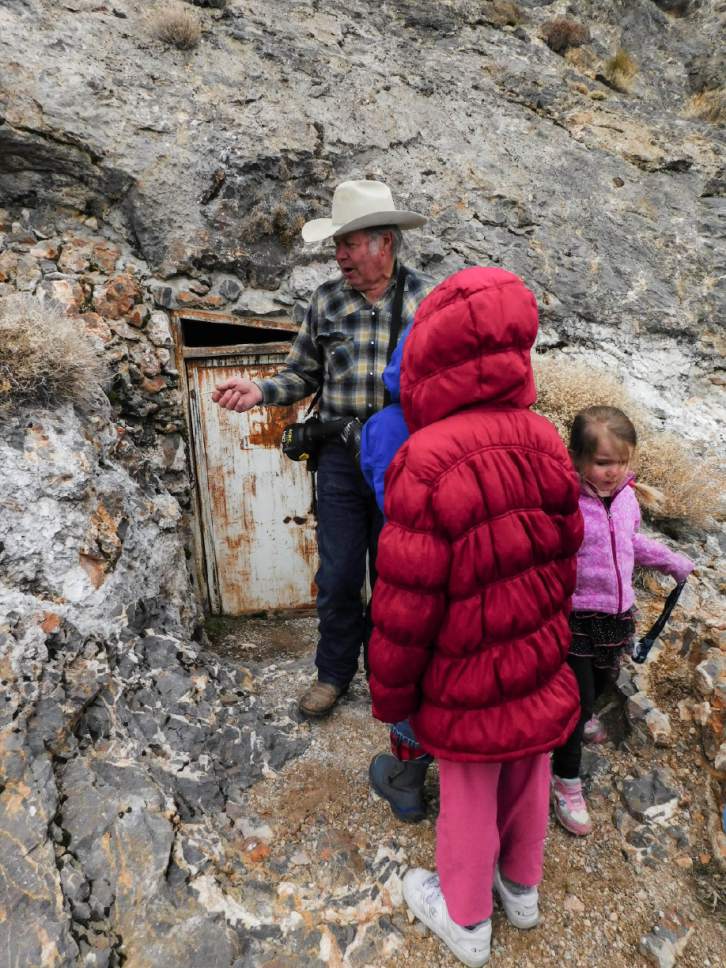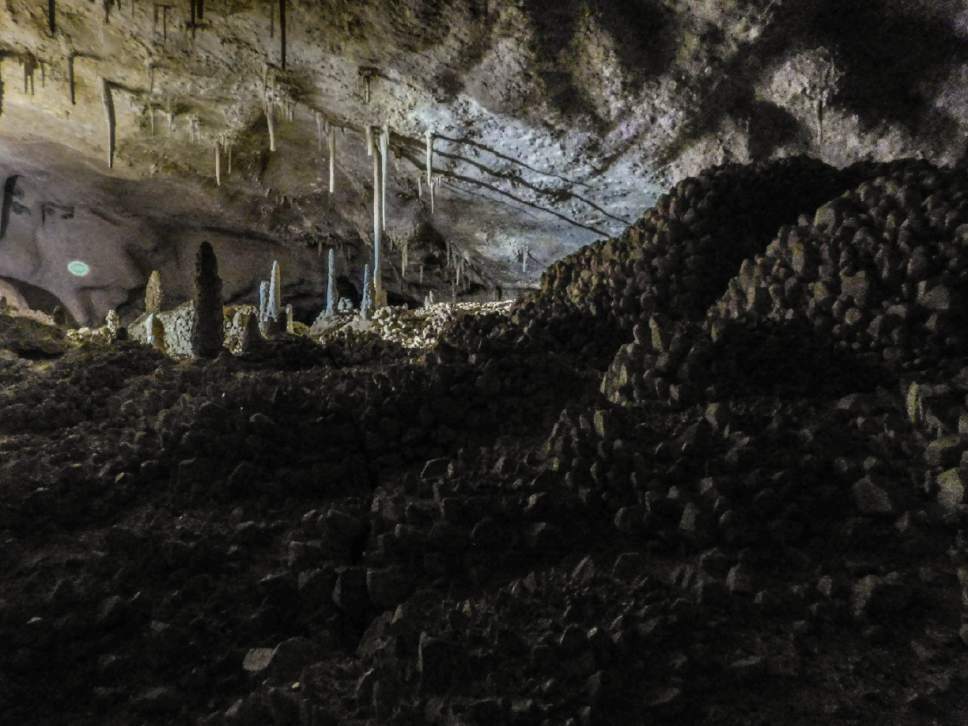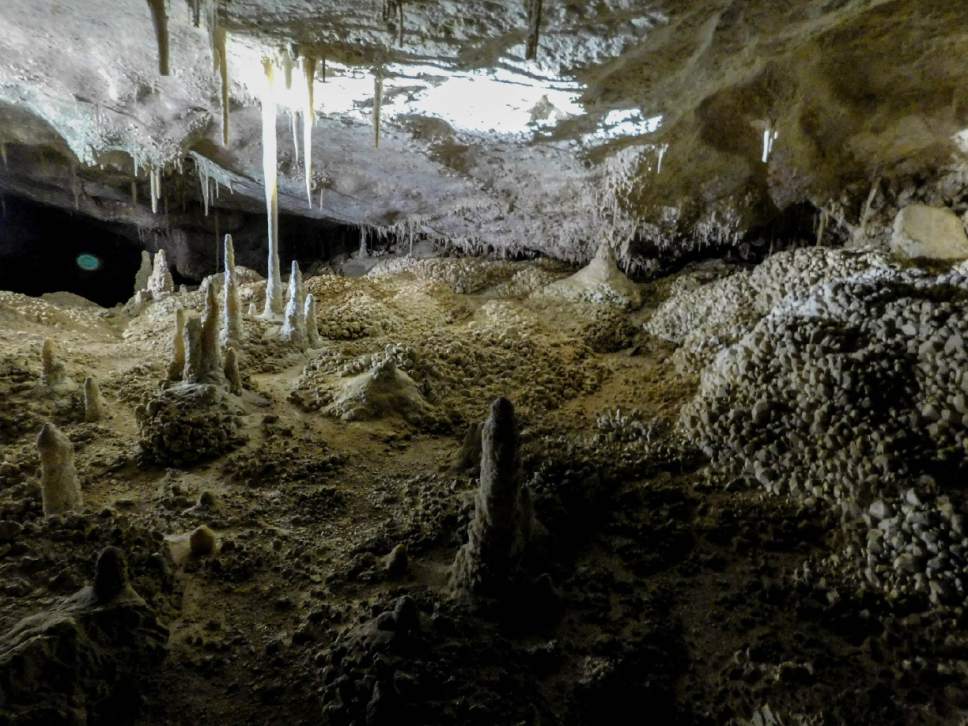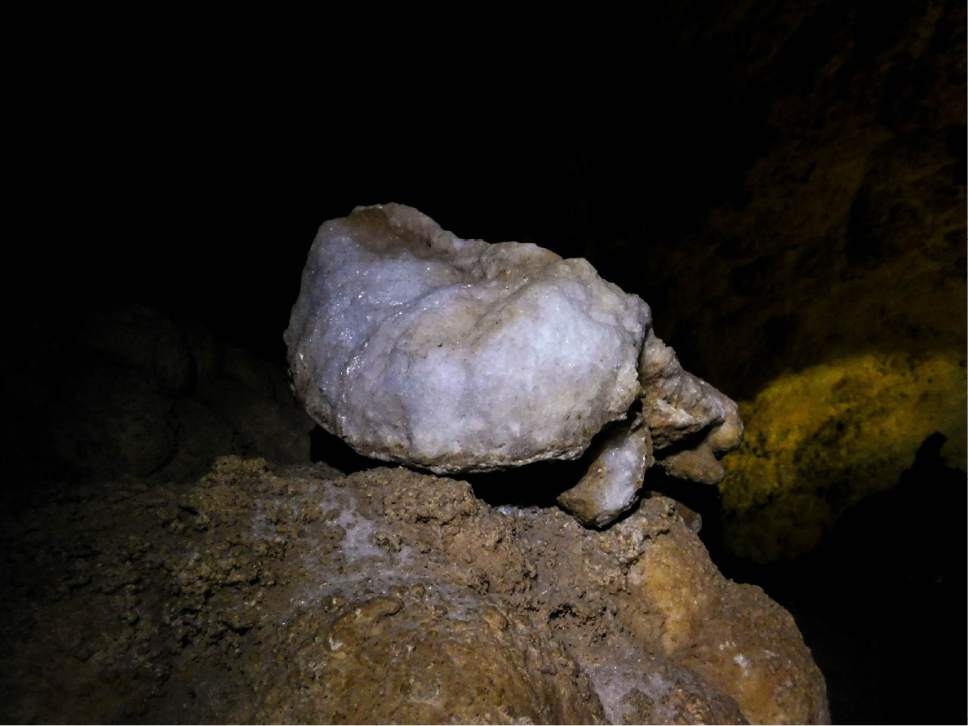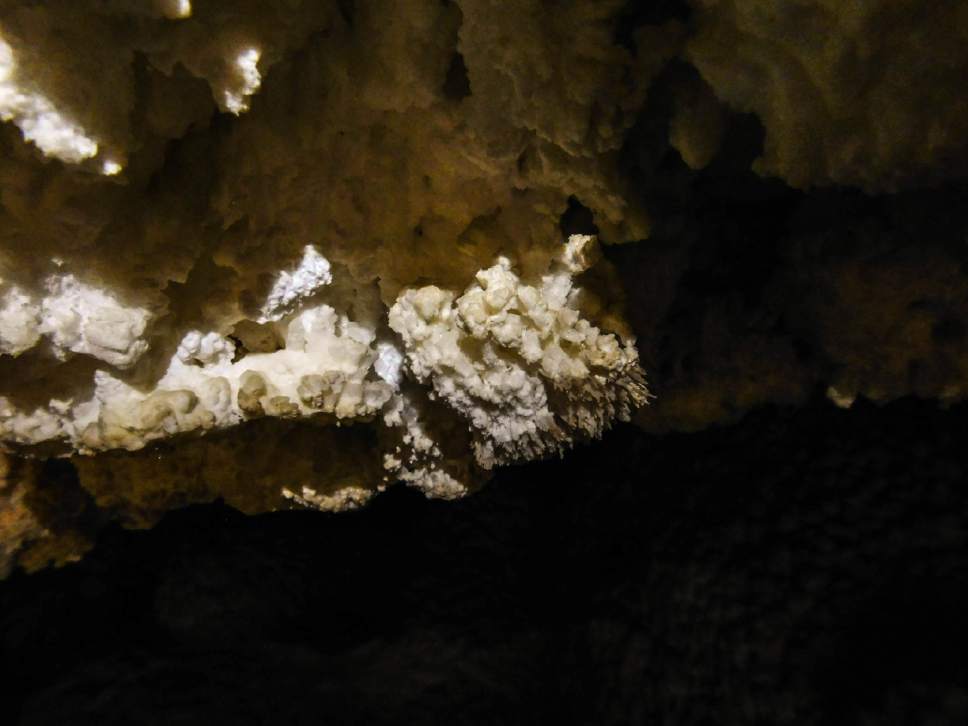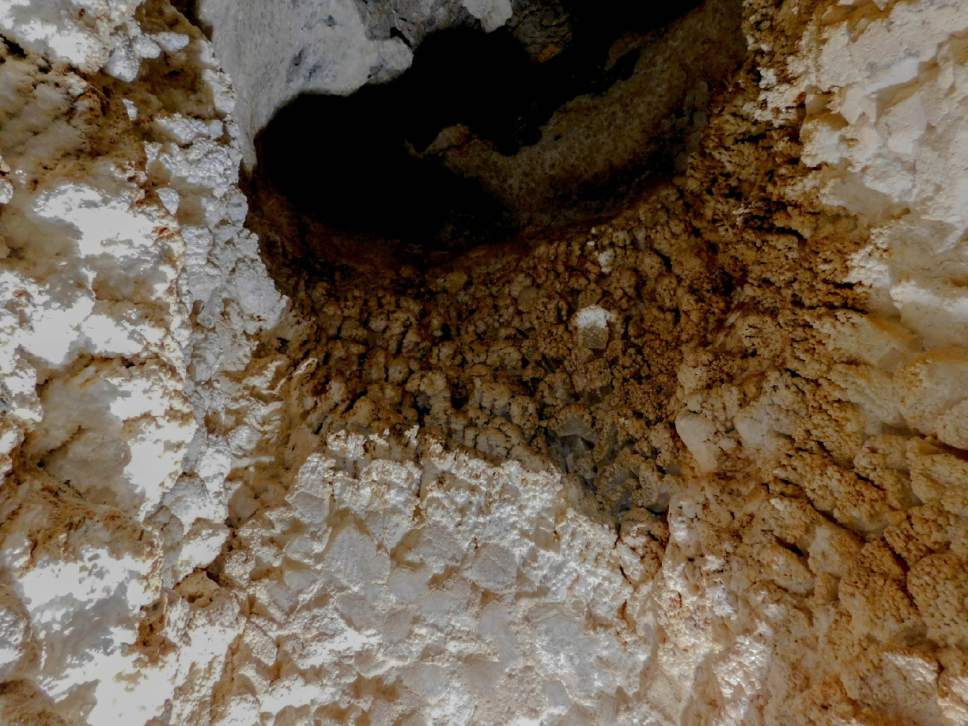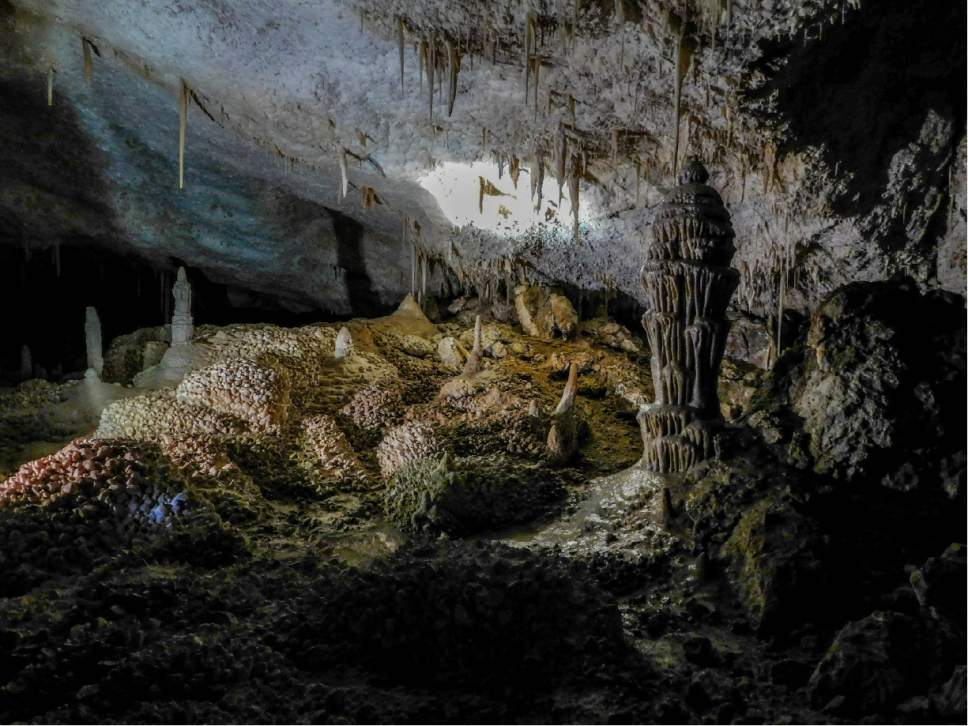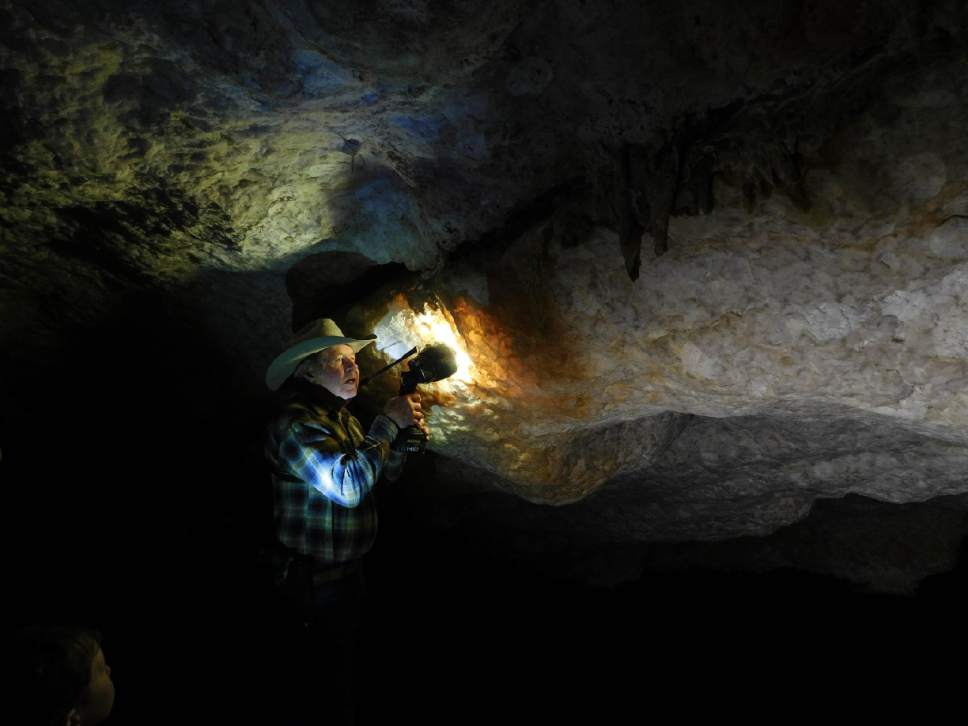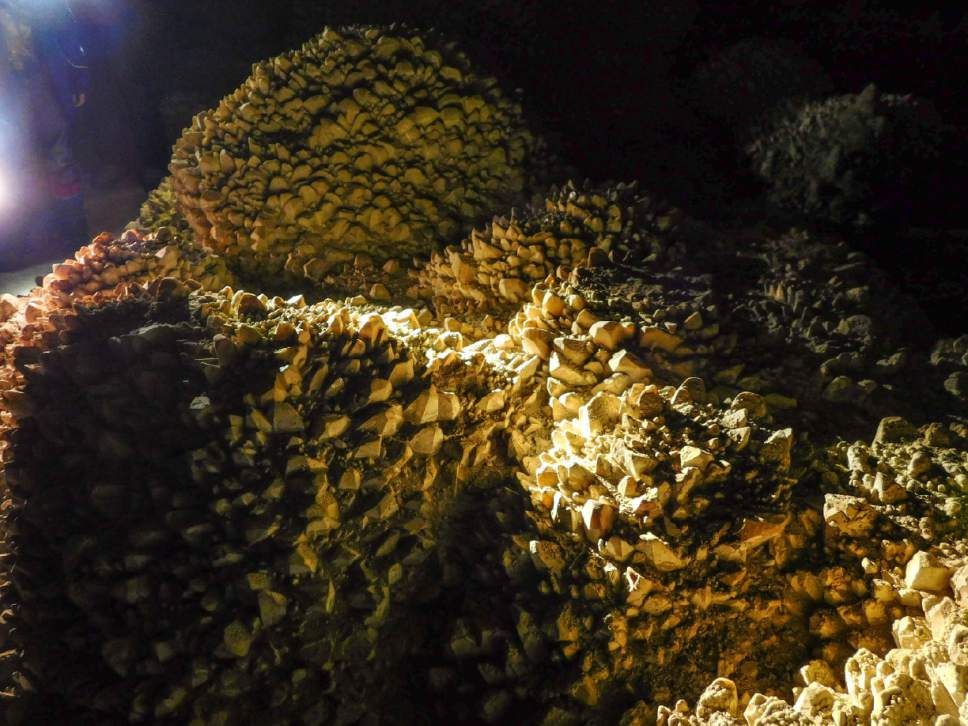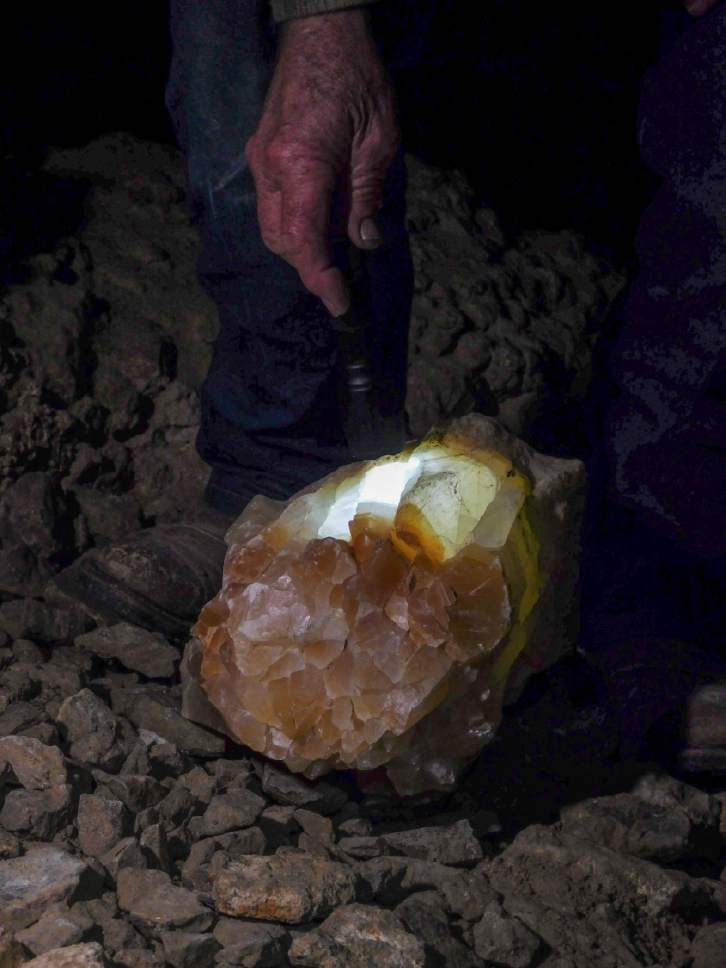This is an archived article that was published on sltrib.com in 2017, and information in the article may be outdated. It is provided only for personal research purposes and may not be reprinted.
Gandy • The walls of Crystal Ball Cave sparkle with an ancient fragility that belies the Wild West outside its bullet-riddled door.
In a glittering room, docent Jerald Bates grants 12-year-old Robert Cope one exception to the first rule of the cave — don't touch the formations — and instructs Cope to tap on a rounded stalagmite rising out of the floor. It rings sonorously through the room, cutting through the silence of this remote corner of western Utah's Snake Valley. Inside the cave, the only clue of the tough surrounding range is Bates himself, who lumbers through the subterranean maze with a cowboy hat on his head and a gun at his hip, while the children on his tour cheer about fairy dust.
"I hope this doesn't make you uncomfortable," he says, gesturing toward his holster as a group of visitors gather this late-winter day at his ranch near Gandy, about 2 miles east of the Nevada border, before a cave tour begins.
Bates' role as advocate and caretaker of this little-known natural wonder is an improbable convergence of family tradition, enterprise, political compromise and an Old West-style armed confrontation over mining rights. His uncle discovered the cave on Spring Mountain, near the family's homestead, in 1957. Bates recalls exploring its tunnels and chimneys as a child, learning its geology and hunting for fossils that have since intrigued paleontologists. Remains of ancient horses, camels and even a saber-toothed cat from some 23,000 years ago have been found in the cave, according to a 1985 report by biologists from Brigham Young University.
For a while, the Bates family operated tours, but a mining claim for the cave was picked up in 2009 by Gold Rush Expeditions, a Holladay-based broker. Not long after that, the cave itself appeared listed for sale on eBay, even though it is on public lands, according to officials with the U.S. Bureau of Land Management in Utah. The ad claimed "that there were not only mineral values but that you would be able to have the paleontological resources within the cave," said Ryan Sutherland, BLM spokesman. Bates suspects Gold Rush Expeditions was trying to profit from a false promise of precious metals under the cave — minerals that probably aren't there, Sutherland agrees.
Corey Shuman, owner of Gold Rush Expeditions, counters that his business only sells mining claims, not property. He said he took an interest in the cave because he believed it was damaged under Bates' watch, with visitors handling the crystals and formations being broken off for personal collection.
Bates, for his part, says Shuman was trespassing; the BLM confirms it hasn't formally established an easement on the road to the cave. Shuman says the BLM has unfairly favored Bates.
"If it's public land, then it's wrong to give some random people rights [to the cave]," Shuman says.
The dispute culminated with a tense confrontation. Bates says Shuman had displayed an assault rifle in cave photos associated with his mining claim — he believes, to intimidate people who might object to mining there. Shuman says the rifle was routine security and that Bates also was armed.
The BLM ultimately ordered a stop to all mining activities, Sutherland said.
Bates generally is not one to side with the government. He says of his gun: "I got this after they killed my friend LaVoy," referring to LaVoy Finicum, the Kanab rancher fatally shot by Oregon state troopers during the 2016 takeover of the Malheur Wildlife Refuge. Bates sympathizes with Cliven Bundy and his family, who have been at the center of high-profile public lands disputes in Nevada and Utah as well as the Oregon standoff, and he is highly suspicious of the BLM and federal authority in general.
But the 2009 dispute over the cave and later break-in attempts where vandals shot up a cave door convinced Bates that his family's beloved discovery was vulnerable. Literally hours from the nearest law-enforcement office — or any town with more than a few dozen people — the cave and its fragile bat population could not be left exposed to unrestricted public access, the BLM determined.
"That's when I joined the enemy," Bates says half-playfully. The BLM appointed him to the post of cave steward, and he was authorized to give tours for donations. About 400 visitors came to Crystal Ball Cave last year, following Bates through rooms of intricate stalactites, ceilings and floors coated in mounds of "cave popcorn" and "cowboy crystal" formations, and walls that sparkle like the backdrop of a high-school prom photo. At the end of the tour, children carefully climb into a domelike "throne" of crystals while Bates watches like a hawk to prevent them from touching the formations.
Bates and his family have begun to promote the cave on social media and are considering tourism amenities on the ranch, where the family trains horses and operates an exotic fish hatchery warmed by a nearby warm spring. Bates' brother, who also lives on the ranch, sells wooden utensils carved from local mountain mahogany.
The tiny warm spring — on public land and free — also invites visitors to soak in its turquoise waters with a small waterfall and oasis of green foliage in the brown-gray West Desert.
The cave is a worthwhile destination in its own right; it also is a convenient side trip to or from Great Basin National Park in Baker, Nev., just across the state line. Tourism in the area appears to be rising rapidly. Visitation to Great Basin exploded last year, growing more than 25 percent over the previous year, according to park reports. Tours at Crystal Ball Cave may fill quickly in coming months. (See box for details on planning a visit.)
"We recommend calling ahead to reserve your place," Bates advises.
Twitter: @erinalberty —
Crystal Ball Cave
Starting April 1, scheduled tours will take place Monday, Friday and Saturday; for hours, visit crystalballcave.com. Tours also may be booked by appointment on those days as well as Tuesday through Thursday, with no tours on Sunday. To book a tour of the cave, call 801-787-6675.
Directions • Gandy is about two hours' drive from Delta; travel west on U.S. Highway 6 toward Nevada; turn north at the signed Gandy Road, about a half mile east of the state line. Gandy is about 30 miles to the north; the Bateses provide directions to their ranch upon tour booking, or you can view a map on their website.


